|
ENTS,
Yesterday my sister Jessica, Dave Scully, and
I hiked along Hornbecks Creek which flows through the Delaware Water
Gap National Recreation Area, Pa. Its a place I have hiked
more than a dozen times. Cat Ladys is what my friends and I have
always called this site. An old widow who had hundreds of cats
owned the site and when she died left the property to the park.
The park service has made some trail upgrades, a stair case along
one of the water falls, steps, etc., since my last visit which was
twelve or fourteen years ago. Hornbecks Creek cuts deeply
through the stone in this portion of the creek. There are
several waterfalls and few places where you can walk to the waters
edge.
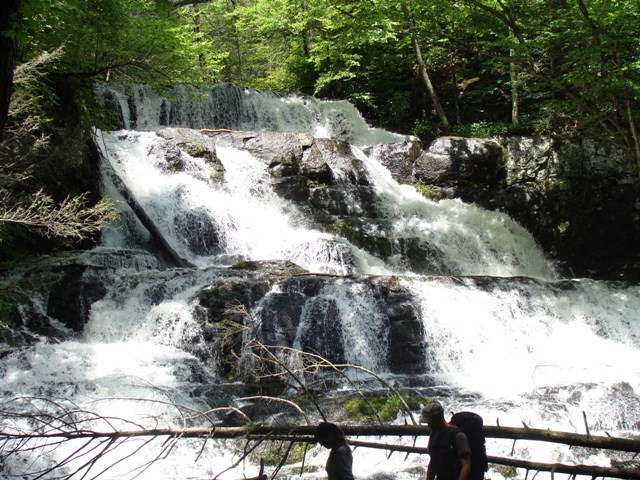 Jessica and Dave at the bottom of one of the
larger falls photo by George Fieo
The forest is dominated by eastern hemlock and
white pine. Other species I saw are yellow birch, chestnut, red, &
white oak, pignut hickory, sugar & red maple, american beech, pitch
pine, eastern red cedar, american basswood, white ash, and black
gum. Most of the larger trees where in the 7-8 cbh range and the
average canopy height is between 90-100.
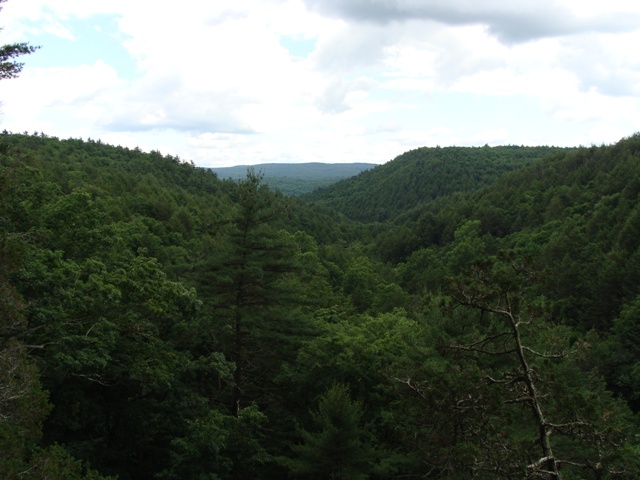
Viewing south from the top of the east ridge of
Hornbecks Creek photo by George Fieo
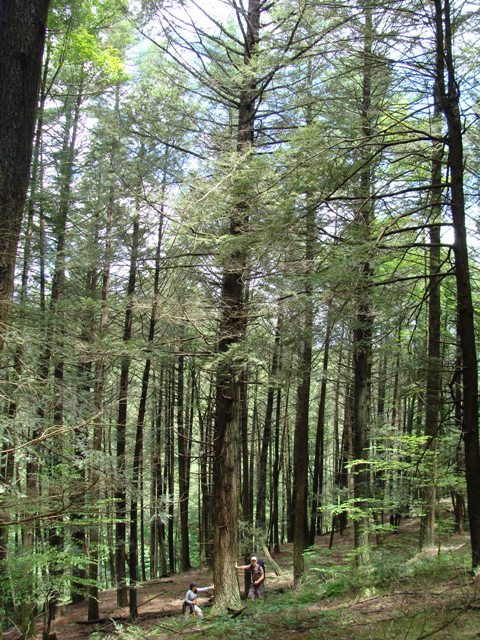 Jessica and Dave with 81 x 115.2 eastern
hemlock photo by George Fieo
Witch hazel was the most common understory
species commonly reaching a height of 15-20 with a few being even
taller. Spice bush, I think, and two large downy serviceberry
were also present.
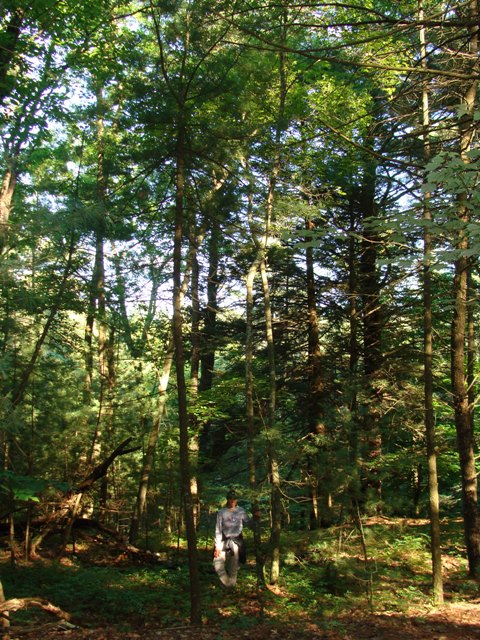 Jessica with 1.5 x 47.7 downy serviceberry
photo by George Fieo
The forest floor varies greatly. There
are patches of perennial flowers, which Im not to familiar with.
In other areas there are just this years seedlings of white pine and
eastern hemlock sprouting amongst the needles. In some areas its
nothing but 2-3 tall yellow birch saplings under the hemlocks.
There were 2 or 3 species of fern Im not familiar with also.
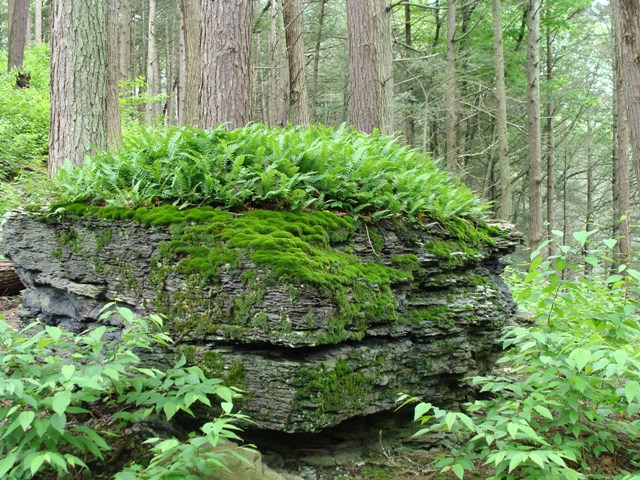 Boulder covered with moss & and ferns photo by
George Fieo
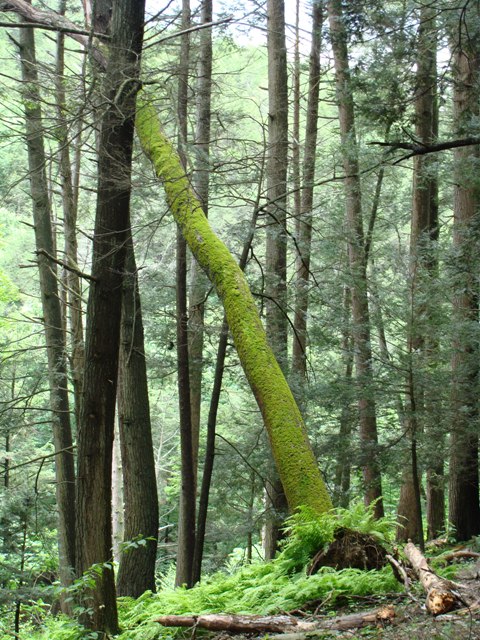 A moss covered snag photo by George Fieo
We saw several species of bugs that we where
not familiar with too. A black and yellow wood boring type of
wasp that was roughly 5 in length, two centipedes that were between
4-6 in length, and some black and orange beetles between 1-1.5 in
length. Frogs and toads where a common site along with a small
garter snake. I believe I saw a wood thrush and another song
bird Im not familiar with. It was gray with a white under belly and
eye brows. It was about the size of a blue bird and seemed to
be jamming to the Geico commercial.
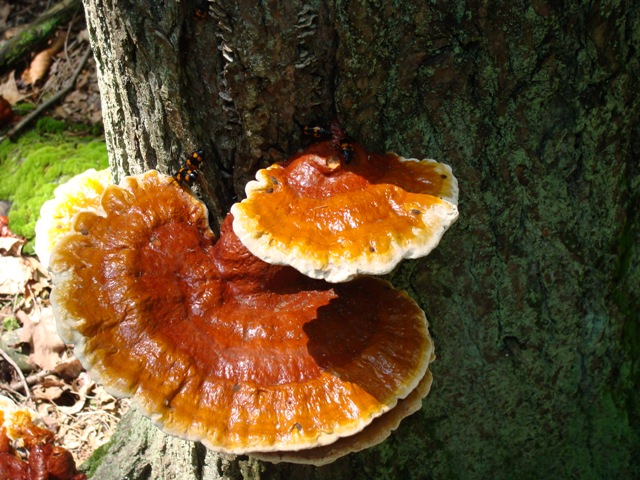 Black and orange beetles on fungi photo by
George Fieo
The biggest surprise at Hornbecks Creek were
the five american chestnuts we found. None of the trees seem
old enough to produce nuts yet so there must be a parent tree
nearby. I could not find it nor any nuts or burs under any of
the other trees. We only searched the immediate area as we
where at the end of our hike. The smallest chestnut is 102
tall and the largest is 41.3 tall. The upper half of tallest
chestnut is dead. It leafed out but the leaves are now brown.
There are 8-12 water sprouts growing just below the dead wood.
I saw no signs of the blight. All of the other chestnuts seem
to be very healthy.
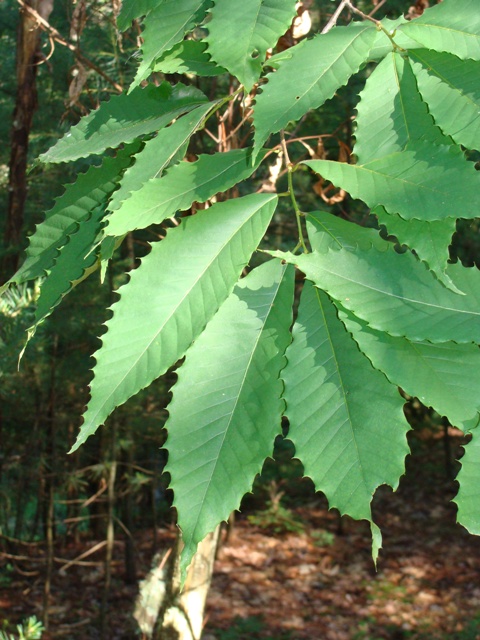 American chestnut leaves photo by George Fieo
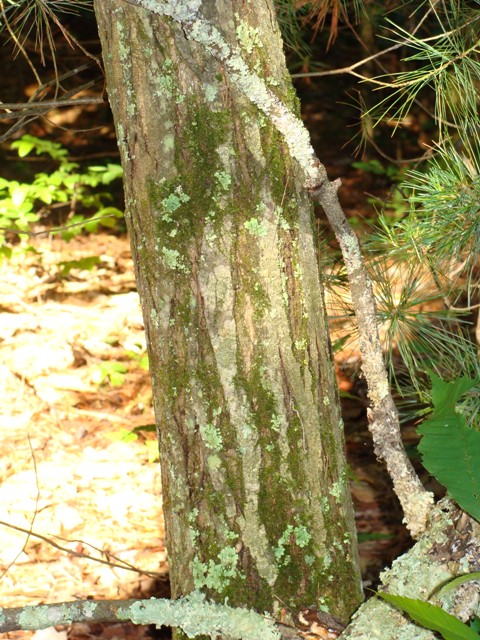 American chestnut bark pattern photo by George
Fieo
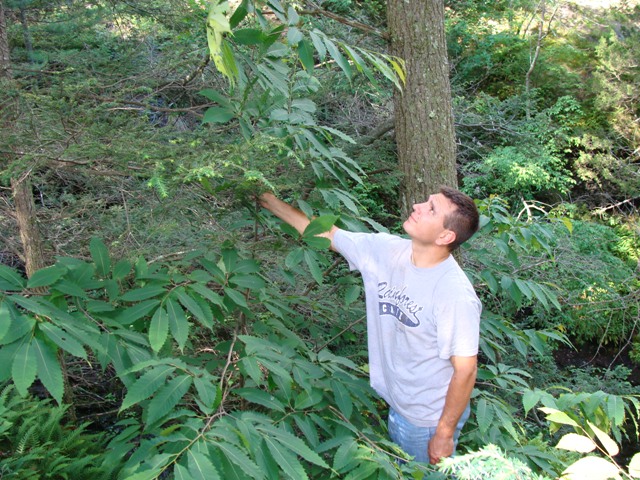
Me with the smallest american chestnut photo by
Dave Schully
Here are the numbers for the trees I measured
Species
CBH
Height
A Basswood
31
90.1
A Beech
69
92.7
A Chestnut
1 dia.
102
A Chestnut
1.25 dia.
189
A Chestnut
1 @ 2
26.9
A Chestnut
1.5
29.4
A Chestnut
13
41.3
Chestnut Oak
611
86.4+
Downy Serviceberry
18
37.5
Downy Serviceberry
1.5
47.7
E Hemlock
75
99.8
E Hemlock
64
107.3
E Hemlock
65
108.4
E Hemlock
81
115.2
E Hemlock
711
116.9
Pignut Hickory
61
94.2+
Pignut Hickory
410
97.6
Pitch Pine
611
85.8
Pitch Pine
34
91.7
Sugar Maple
53
97.8
Sugar Maple
67
108.2
White Pine
85
101.7
White Pine
72
107.1
White Pine
77
107.1
White Pine
510
107.3
White Pine
85
109.1
White Pine
71
119.2
Yellow Birch
55
77.8
Dale, the 116.9 hemlock and the 108.2 sugar
maple should help bump up the RI for the Delaware Water Gap.
There are taller specimens for most of the hardwoods but Ill have
to wait until leaf drop.
George
Continued
at:
http://groups.google.com/group/entstrees/browse_thread/thread/63912e3925131d8d?hl=en
|